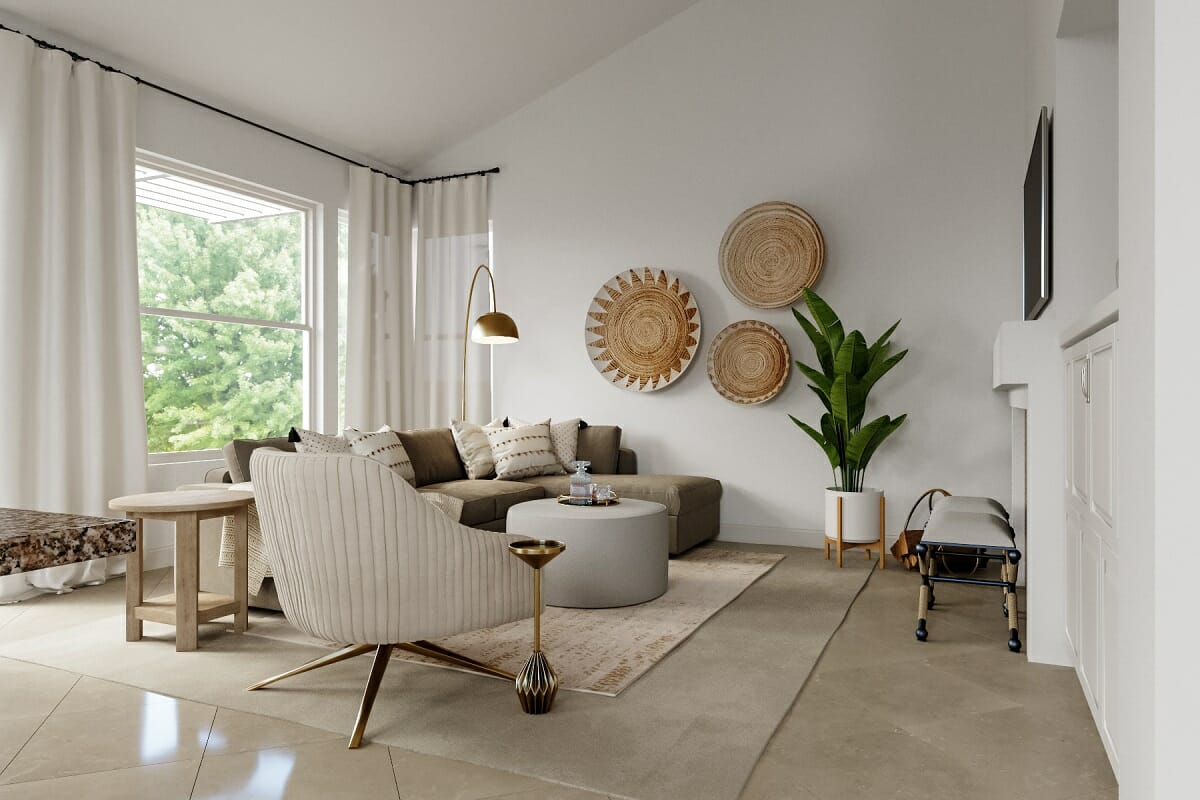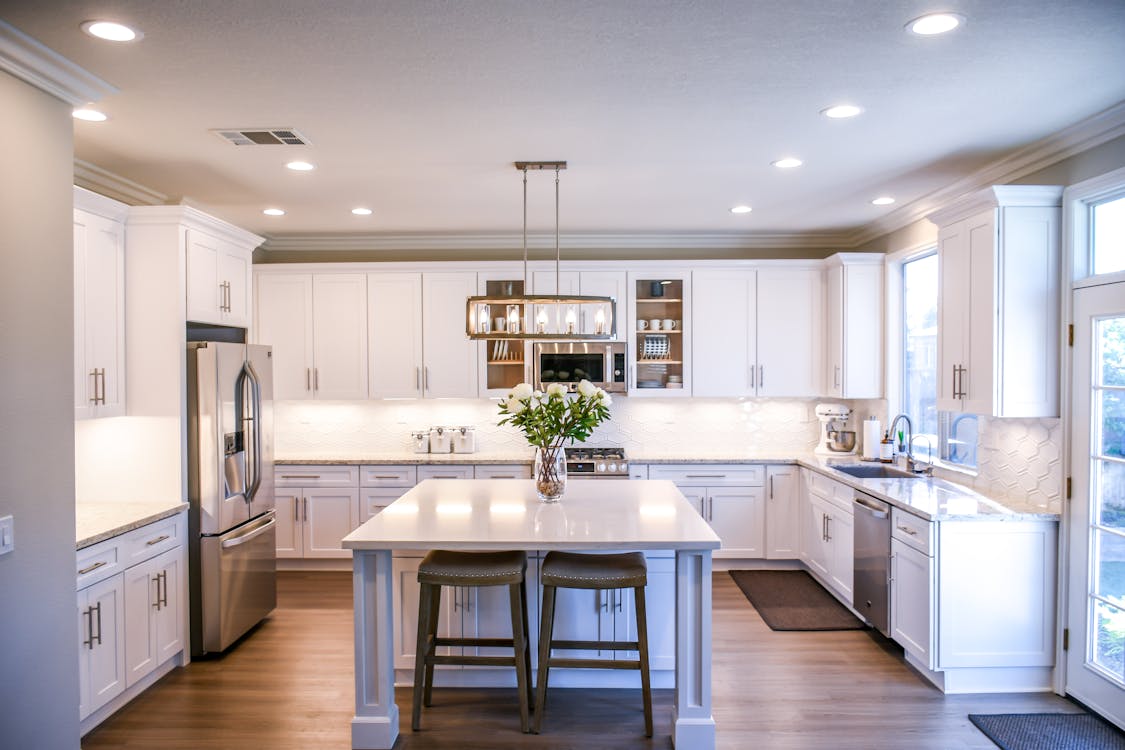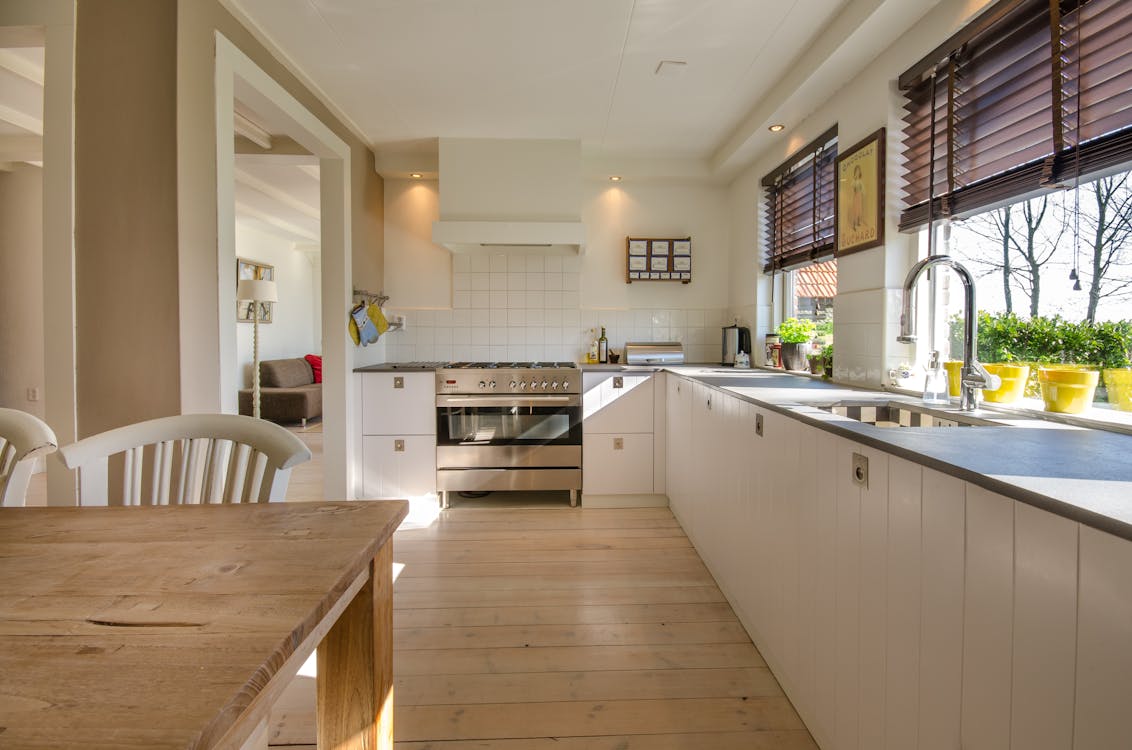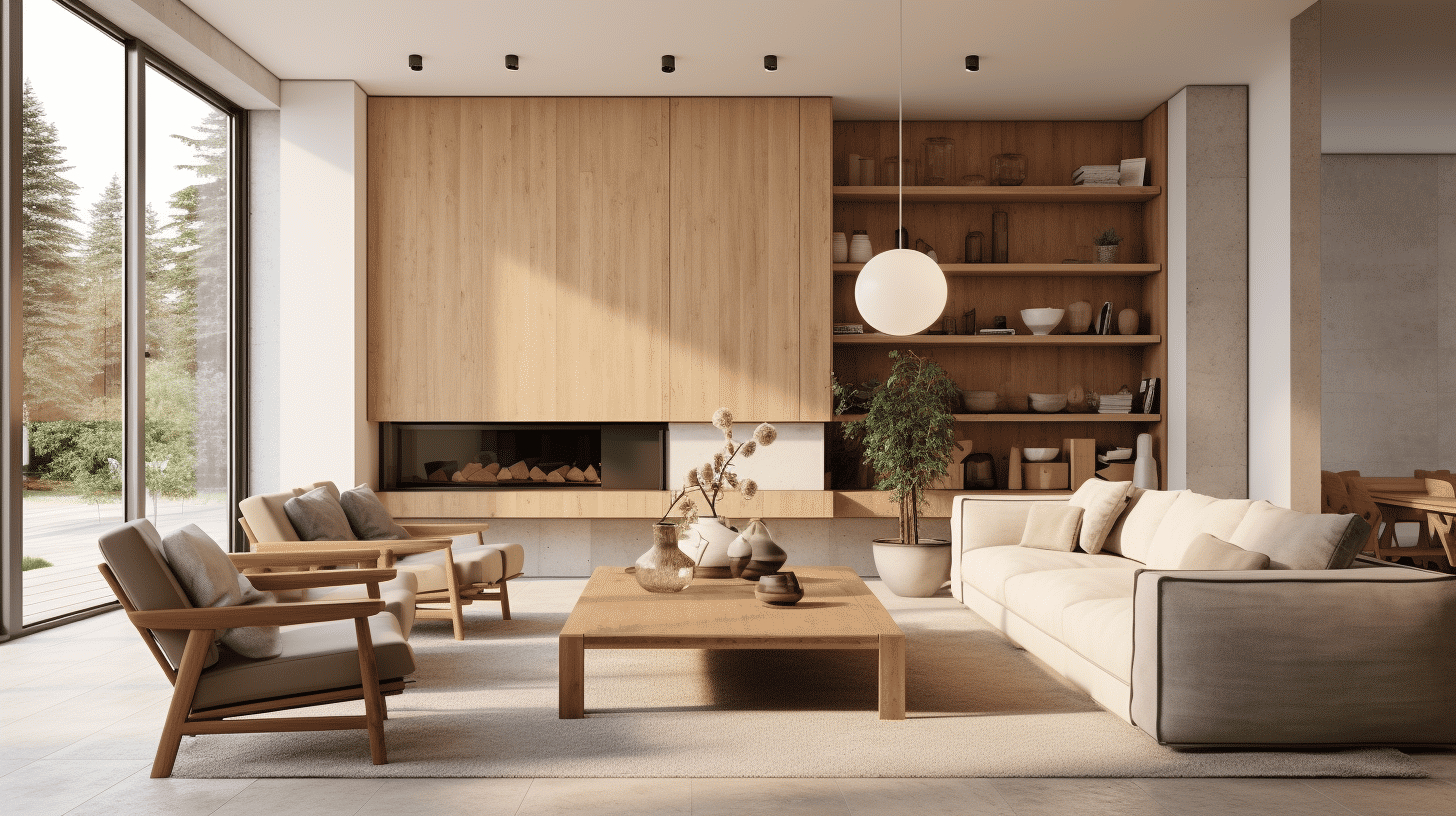When it comes to purchasing your first home, there are a multitude of factors to consider. Location, size, and price are typically the top priorities for many first-time homeowners. However, there’s one aspect that often gets overlooked: sustainability. As the world becomes more environmentally conscious, so should our choices as homeowners. Eco-friendly homeownership offers a myriad of benefits, from energy efficiency to cost savings. By making sustainable choices, you not only contribute to a greener planet but also create a healthier and more economical living environment for yourself and future generations.
In this article, we will explore the benefits of eco-friendly homeownership, delve into the importance of sustainable home renovations, and uncover the sustainable principles you can adopt in your interior design to create an eco-friendly haven. So, whether you’re considering purchasing a new home or renovating your existing one, join us on this journey to discover how you can embrace eco-friendly minimalism and make sustainable choices for your first home.
Benefits of Eco-friendly First-time Homeowners

As environmentally conscious practices are becoming increasingly important to individuals and communities, many homeowners are seeking ways to make their homes more sustainable. Eco-friendly homeownership offers numerous benefits, from energy efficiency to cost savings and increased property value. Let’s explore these advantages in more detail.
Energy Efficiency
One of the most significant benefits of eco-friendly homeownership is energy efficiency. Green homes are designed to minimize energy consumption and reduce environmental impact. Here are some key points to consider:
- Lower energy usage: LEED-certified homes, which meet strict environmental standards, use 20 to 30% less energy on average compared to conventional homes[1].
- Reduced utility bills: By implementing energy-efficient features, homeowners can save money on electricity bills. According to research, low-cost sustainable projects can save homeowners around $200 on electricity bills annually[4].
- Preference among homebuyers: Studies indicate that 9 out of 10 homebuyers prefer homes with energy-efficient features[2]. This preference demonstrates the value that energy efficiency holds in the housing market.
Cost Savings
Eco-friendly homeownership offers a tangible advantage when it comes to cost savings. By embracing sustainable practices, homeowners can enjoy long-term financial benefits. Consider the following points:
- Lower utility costs: Energy-efficient-rated homes not only consume less energy but also result in lower utility bills. These savings can accumulate significantly over time and contribute to the overall affordability of homeownership[4].
- Potential tax incentives: In some cases, homeowners may be eligible for tax incentives or rebates when they make eco-friendly improvements to their homes. These incentives can further reduce the initial costs of implementing sustainable features and technologies.
Higher Property Value
Investing in eco-friendly homeownership can lead to increased property value. Green homes are in high demand due to their positive environmental impact and cost-saving potential. Here are some key insights:
- Premium pricing: Research from L.E.K. Consulting shows that 91% of residential contractors are willing to pay a premium for eco-friendly products[1]. This willingness to invest in sustainable features indicates the market’s recognition of their value.
- Increased selling price: Studies have found that energy-efficient-rated homes sell for 2.7% more than unrated homes, and higher-rated homes can sell for 3-5% more[5]. These findings highlight the potential financial return for eco-friendly homeowners.
In addition to these benefits, it’s worth noting that 50% of Realtors® have helped clients buy or sell homes with green features, indicating the growing demand for eco-friendly homeownership[5]. Furthermore, green or eco-friendly home and home improvement purchases accounted for 38.5% of consumers in the United States, showcasing the broader societal shift towards sustainability[6].
Embracing eco-friendly homeownership not only benefits individuals financially but also contributes to global sustainability efforts. By reducing energy consumption, saving money, and increasing property value, homeowners can make a positive impact on the environment while enjoying the advantages of eco-friendly living.
Importance of Sustainable Home Renovations

Home renovations can be an exciting and rewarding endeavor, allowing homeowners to improve the functionality and aesthetics of their living spaces. However, it’s crucial to consider the long-term impact of these renovations, not just for our own benefit but also for the greater good of the planet. Sustainability should be a key consideration when planning home renovations, as it offers a multitude of benefits that go beyond personal comfort and style.
Health Benefits
Sustainable home renovations can have a significant positive impact on our health and well-being. By incorporating eco-friendly materials and practices, homeowners can minimize exposure to harmful toxins and pollutants often found in conventional construction materials. These toxins, such as volatile organic compounds (VOCs), can lead to respiratory issues, allergies, and other health problems. Sustainable materials, on the other hand, are non-toxic and improve indoor air quality, creating a healthier living environment for you and your loved ones.
Environmental Impact
One of the most apparent reasons to prioritize sustainable home renovations is the positive impact it has on the environment. Traditional construction and home renovations are known to contribute to carbon emissions, energy consumption, and waste generation. By adopting sustainable practices, you can reduce your carbon footprint and help mitigate climate change. Sustainable renovations include energy-efficient upgrades, water-saving fixtures, renewable energy systems, and the use of recycled or locally sourced materials. These choices not only minimize environmental harm but also contribute to resource conservation and a greener future for generations to come.
Economic Opportunities
Sustainable home renovations also present economic opportunities for homeowners. By investing in energy-efficient upgrades, homeowners can significantly reduce energy bills over time. Energy-efficient appliances, improved insulation, and smart home technologies can help lower energy consumption, leading to long-term savings. Additionally, sustainable renovations can increase the value of your property. With growing awareness and demand for green homes, eco-friendly features and certifications such as LEED (Leadership in Energy and Environmental Design) can attract potential buyers and potentially fetch a higher resale value.
Additional Information
- Renovations that comply with green standards have shown significant health improvements, especially in low-income housing[1].
- The Europe home improvement market size is projected to reach over USD 315.5 billion[2].
- Americans spent $538 billion at home improvement stores in 2021[3].
- 59% of U.S. homes were built before 1980, indicating a need for energy-efficient renovations[4].
- National green construction generated $167.4 billion in GDP from 2011-2014[5].
It’s clear that sustainable home renovations are not only beneficial for our individual well-being but also for the environment and economy as a whole. By making conscious choices during the renovation process, we can create healthier, more efficient homes while contributing to a sustainable future. So why not embark on your next home renovation project with sustainability in mind?
Sustainable Principles in Interior Design

Interior design plays a significant role in creating functional and aesthetically pleasing spaces. But did you know that it can also contribute to a more sustainable and eco-friendly lifestyle? By embracing sustainable principles in interior design, we can minimize the environmental impact of our living spaces while promoting a healthier planet. In this article, we will explore some key strategies for incorporating sustainability into interior design.
Use of Natural and Sustainable Materials
One of the fundamental principles of sustainable interior design is the use of natural and sustainable materials. These materials not only reduce our carbon footprint but also create a healthy indoor environment. Here are some popular materials that align with sustainable principles:
- Bamboo: Known for its rapid growth and renewability, bamboo is a sustainable alternative to traditional hardwood.
- Cork: Harvested from the bark of cork oak trees, cork is a versatile and eco-friendly material that adds warmth and texture to any space.
- Reclaimed Wood: Using reclaimed wood in interior design not only reduces waste but also adds character and a sense of history to a room.
- Recycled Materials: Incorporating items made from recycled materials, such as glass or plastic, helps reduce the demand for virgin resources and diverts waste from landfills.
When selecting materials for your interior design projects, consider the environmental impact, durability, and recyclability of each option. By opting for natural and sustainable materials, you can create spaces that are both visually appealing and eco-friendly.
Minimalist Design
Another approach to sustainable interior design is embracing minimalist design principles. Minimalism focuses on simplicity and functionality, which inherently reduces waste and excess consumption. Here are some key aspects of minimalist design:
- Decluttering: By decluttering your space and keeping only the essentials, you can create a more organized and serene environment.
- Multifunctional Furniture: Investing in furniture pieces that serve multiple purposes can maximize space utilization and minimize the need for additional items.
- Neutral Color Palette: Using a neutral color palette not only provides a timeless aesthetic but also allows for flexibility when making future design updates.
- Quality Over Quantity: Prioritizing high-quality, durable items over disposable and trendy decor contributes to a more sustainable mindset.
By embracing minimalist design principles, you can create visually appealing spaces that prioritize sustainability, functionality, and longevity.
Greenery and Natural Lighting

Natural elements like plants and sunlight can significantly enhance the sustainability of interior design. Here’s how greenery and natural lighting contribute to eco-friendly spaces:
- Indoor Plants: Adding indoor plants not only improves air quality but also brings nature indoors, creating a soothing and rejuvenating ambiance.
- Biophilic Design: Biophilic design incorporates elements of nature into interior spaces, promoting a stronger connection to the natural world and improving overall well-being.
- Maximizing Natural Light: Designing spaces that maximize natural light reduces the need for artificial lighting, saves energy, and creates a warm and inviting atmosphere.
Integrating greenery and natural lighting into your interior design projects can create visually stunning and sustainable spaces that promote well-being.
Smart Technology and Biophilic Design
Advances in technology and innovative design concepts have opened up exciting possibilities for sustainable interior design. Here are two key trends that embrace sustainability:
- Smart Technology: Incorporating smart technology, such as energy-efficient lighting systems and smart thermostats, can significantly reduce energy consumption, lower utility costs, and create a more sustainable home environment.
- Biophilic Design: Inspired by the inherent connection between humans and nature, biophilic design focuses on incorporating natural elements, patterns, and materials into interior spaces. This design approach not only benefits our well-being but also reduces our ecological footprint.
By integrating smart technology and biophilic design into your interior spaces, you can create sustainable environments that are efficient, visually appealing, and in harmony with nature.
Embracing sustainable principles in interior design goes beyond creating beautiful spaces – it’s about making conscious choices that contribute to planetary well-being. By using natural and sustainable materials, embracing minimalist design principles, incorporating greenery and natural lighting, and leveraging smart technology and biophilic design concepts, we can create sustainable spaces that inspire and uplift our lives while preserving the environment.
Also Read : Sustainable Home Decor : Eco-Friendly Ideas for Every Room in 2024
Conclusion
In conclusion, adapting an eco-friendly and minimalist approach to homeownership offers numerous benefits for first-time homebuyers. By prioritizing sustainability, individuals can create a healthier living environment, reduce energy consumption and costs, and potentially increase the value of their property. Incorporating sustainable principles into home renovations can further enhance these benefits while contributing to positive environmental impact and economic opportunities.
Incorporating natural and sustainable materials, embracing minimalist design, incorporating greenery and natural lighting, and incorporating smart technology and biophilic design are all key components of creating a sustainable and aesthetically pleasing living space.
So why wait? Start your eco-friendly minimalist journey today and create the home of your dreams with the guidance of Minimalist Home Guru. Explore their wide range of resources and expert advice to help you on your path to a more sustainable and minimalist lifestyle. Visit Minimalist Home Guru to learn more.
Frequently Asked Questions
- What is eco-friendly minimalism and how does it relate to sustainable choices for first-time homeowners?Eco-friendly minimalism is a lifestyle and design approach that focuses on reducing waste, optimizing resource usage, and creating a sustainable living environment. For first-time homeowners, adopting eco-friendly minimalism means making conscious choices that are environmentally friendly and promote sustainable practices within their homes.
- What are some eco-friendly choices for first-time homeowners?Some eco-friendly choices for first-time homeowners include: 1. Installing energy-efficient appliances, 2. Using sustainable building materials, 3. Incorporating natural lighting and ventilation, 4. Implementing water-saving fixtures, and 5. Recycling and composting waste.
- Are there any financial benefits to adopting eco-friendly minimalism as a first-time homeowner?Yes, adopting eco-friendly minimalism can result in several financial benefits, such as reduced energy bills due to energy-efficient appliances and insulation, potential tax credits for using renewable energy systems, and increased home value due to sustainable upgrades.
- Can adopting eco-friendly minimalism be expensive for first-time homeowners?While some eco-friendly upgrades may require an initial investment, such as energy-efficient appliances or sustainable building materials, the long-term cost savings in terms of energy bills and maintenance expenses usually outweigh the initial expenses. Additionally, there are budget-friendly options available for first-time homeowners who want to embrace eco-friendly minimalism.
- Where can first-time homeowners find sustainable and eco-friendly products for their homes?First-time homeowners can find sustainable and eco-friendly products for their homes in various places, such as eco-conscious home improvement stores, online marketplaces specializing in eco-friendly products, local farmers markets for organic produce and eco-friendly cleaning products, and even thrift stores for furniture and decor items.

